400 Years Later, The Legacy of Slavery on Health Equity
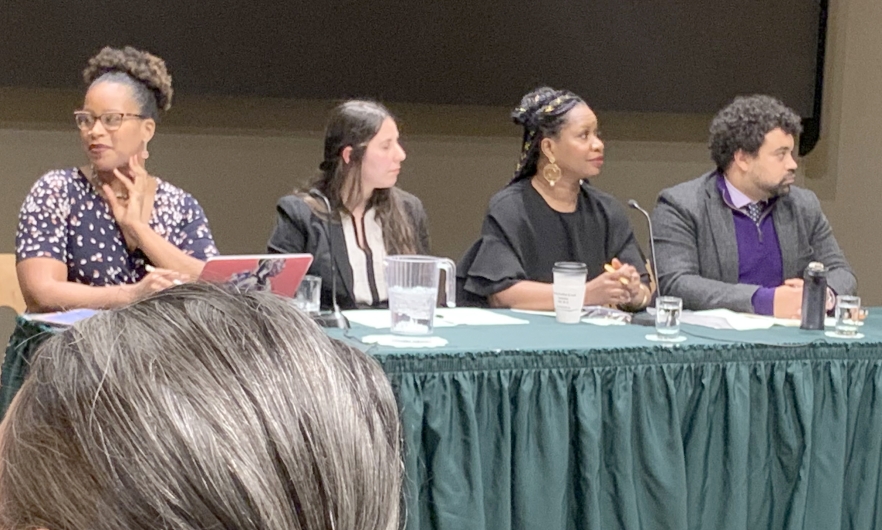
December 11, 2019, the Bloomberg School of Public Health hosted a forum to examine the complex history of slavery and its impact on health equity in Baltimore, Maryland and across the United States.
The event was co-hosted by the Center for Health Equity and Urban Health Institute at Johns Hopkins University; Office of Public Health Practice and Training and SOURCE at Johns Hopkins Bloomberg School of Public Health; and the Department of the History of Medicine at Johns Hopkins School of Medicine.
Below is a summary we captured at the event. You can also read Dr. Lisa Cooper's, director of the Johns Hopkins Center for Health Equity, Baltimore Sun op-ed piece about the legacy of slavery on public health here.
400 years after the first African slaves arrived in Jamestown, Virginia, public health professionals, faculty and students, community members, and historians from across Baltimore and beyond gathered in Sommer Hall at the Bloomberg School of Public Health to discuss the legacy slavery left behind on health and health equity in Baltimore and throughout the United States.
“We so often separate the history of slavery as a period that has ended but in fact the legacies persist to this day.”, said Alexandre White, assistant professor of sociology and the history of medicine here at Johns Hopkins Krieger School of Arts and Sciences and the School of Medicine.
A Historical Perspective
Moderator Jeremy Greene, a William H. Welch professor of medicine the history of medicine out of the Johns Hopkins School of Medicine, kicked off the evening discussion by asking panelists to share “a big picture chronology” of the intersection of slavery and health since 1619.
Jessica Marie Johnson, assistant professor of the department of history of medicine at Hopkins, started by taking us back to the 15th and 16th century before slavery arrived in the United States by giving a breakdown of the Atlantic slave trade. Deirdre Cooper Owens, the Charles and Linda Wilson professor in the history of medicine at the University of Nebraska-Lincoln then took us in to the 19th century by talking about the United States ban on the import of African slaves in 1807 and as a result of this ban, slave owners and physicians took an interest in maternal health to increase the natural rate of birth for black women.
“All of a sudden you have a consorted effort by the state and by slave owners and physicians who are now concerned with how to increase the natural rate of birth for black women […] natural increase was the thing that could keep the engine of slavery alive and running in the United States.”

Dr. Owens also linked the freedom of slaves in 1865 to disparities in black maternal health in 2019. Freedom for black women, specifically black mothers, also meant a shift in ideology among white physicians. Black mothers went from being cared for to not being believed when expressing health concerns and the idea was birthed that they can manage pain better than other racial groups.
“(today) There is a crisis where black women have a higher maternal morbidity rate, infant mortality rate, and low weight birth than any other group in the country. For me the legacy is how do we have a consorted effort by every person in here to eradicate those stats because stats have been unchanging from century to century”.
Moving in to the 20th century, Elizabeth O’Brien, assistant professor of the History of Medicine at the Johns Hopkins School of Medicine, spoke about a post-Civil War America and how Jim Crow laws and black code allowed the health care system to exclude black Americans through segregation in hospitals and clinics, banning black health professionals and students from medical institutions and associations, and control of federal assistance programs, such as the Aid to Families with Dependent Children (AFDC).
As a result, African Americans received inadequate health care and had “shorter and sicker lives” in comparison to their white counterparts.
As a historian on the Baltimore panel, Dr. Thomas shared the origins of the Bloomberg School of Public Health and its complex relationship with surrounding communities, also known as the Eastern Health district. Those who lived in these neighborhoods became known as the most studied people in the world. Many in the area felt that researchers, students, and health professionals from the School of Public Health were invasive with their questioning and became tired of being the subject of studies. As a result, this placed a strain on the relationship between the School and those who lived near by.
Environmental Factors
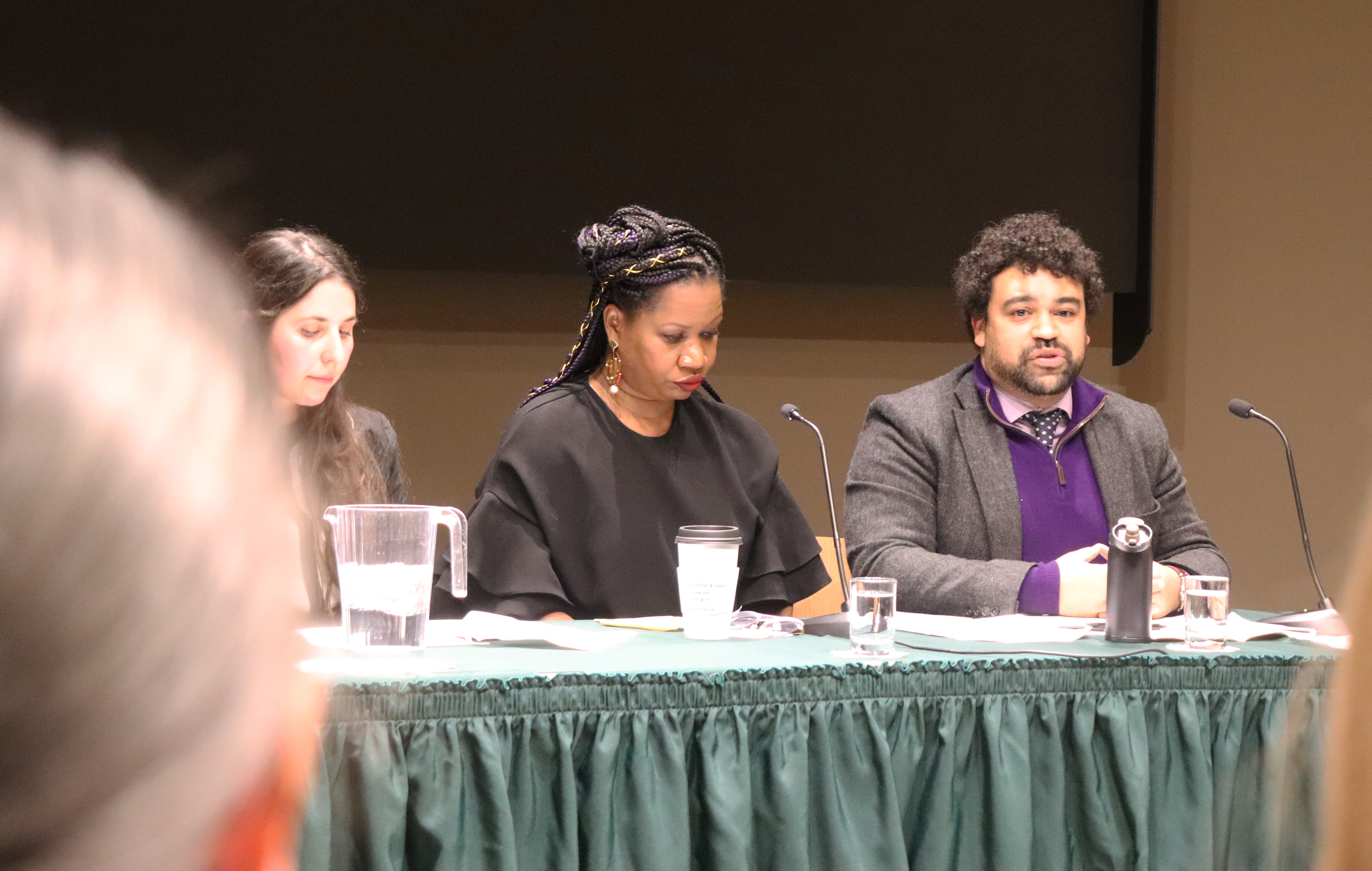
Post slavery many African Americans migrated in large numbers to urban cities to escape racial violence and terror. Unfortunately, they were met with discriminatory housing and labor practices and were forced to live in some of the poorest and dilapidated areas of these cities. Dr. Alexandre White discussed impact this had on their heath while showing us how these same issues reveal themselves in neighborhoods in 2019.
“When you think about public health, place matters! Place is foundational to health outcomes of individuals that are in areas that have access to services, social support, health care, clean water, food (etc.). In turn, we see all these disparities taking place today and this is a direct result of the history of slavery and its persistence.”
Dr. Janice Bowie echoed his thoughts later in the evening by attributing access to social drivers, such as where people live, their exposure to resources, clean water (etc.) to positive health outcomes.
A Focus on Baltimore
Transitioning the dialogue to a faith-based perspective, Dr. Cooper turned to one of Baltimore’s most esteemed faith-based community leaders, Bishop Douglas Miles, also a graduate of Johns Hopkins.
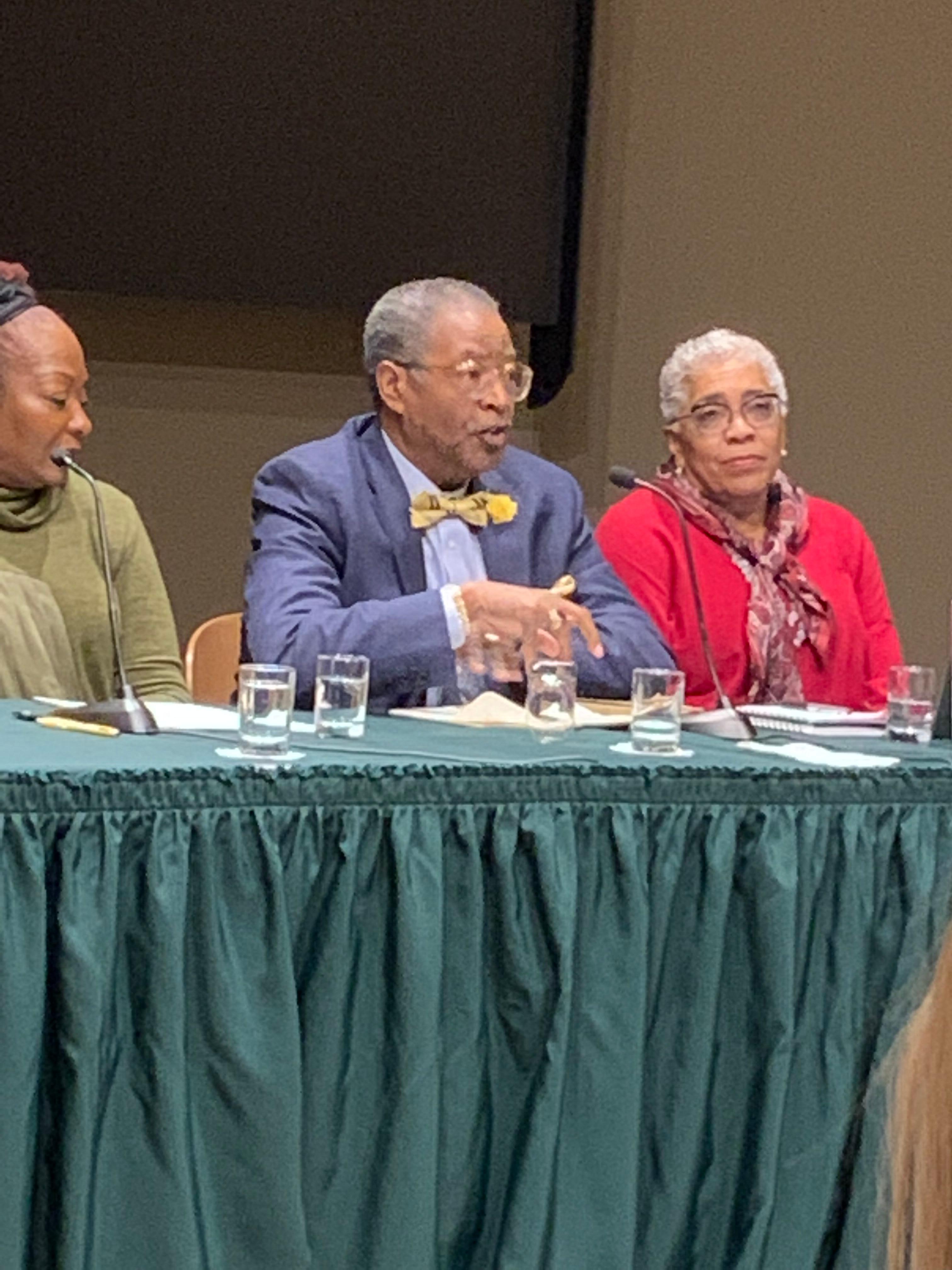
A native of Baltimore, Bishop miles started by describing the difficulties many African Americans in his generation faced when seeking medical care in the city during the end of segregation. He attributes these challenges to Johns Hopkins and the white church’s role in pushing forth the philosophy of eugenics in Baltimore and how that held white protestant men at the top of the construct and African Americans and Mexicans at the bottom.
Another native of Baltimore, Dr. Lawrence Jackson, shared what life was like in Baltimore during his teen years. Sharing images of him and his crew, also known as the Oxfords, Dr. Lawrence reminisced about the activities he and his friends participated in such as joking around, forming social clubs, hanging out at different schools, and going to parties all while remaining conscious of the violence that plagued the city and the likelihood of someone that looked like them reaching the age of 19. While all of them aspired for successful lives outside of their communities and went on to college or the military, many of them were affected by the drugs and violence that plagued Baltimore in the 80s and 90s.
A Call to Do More
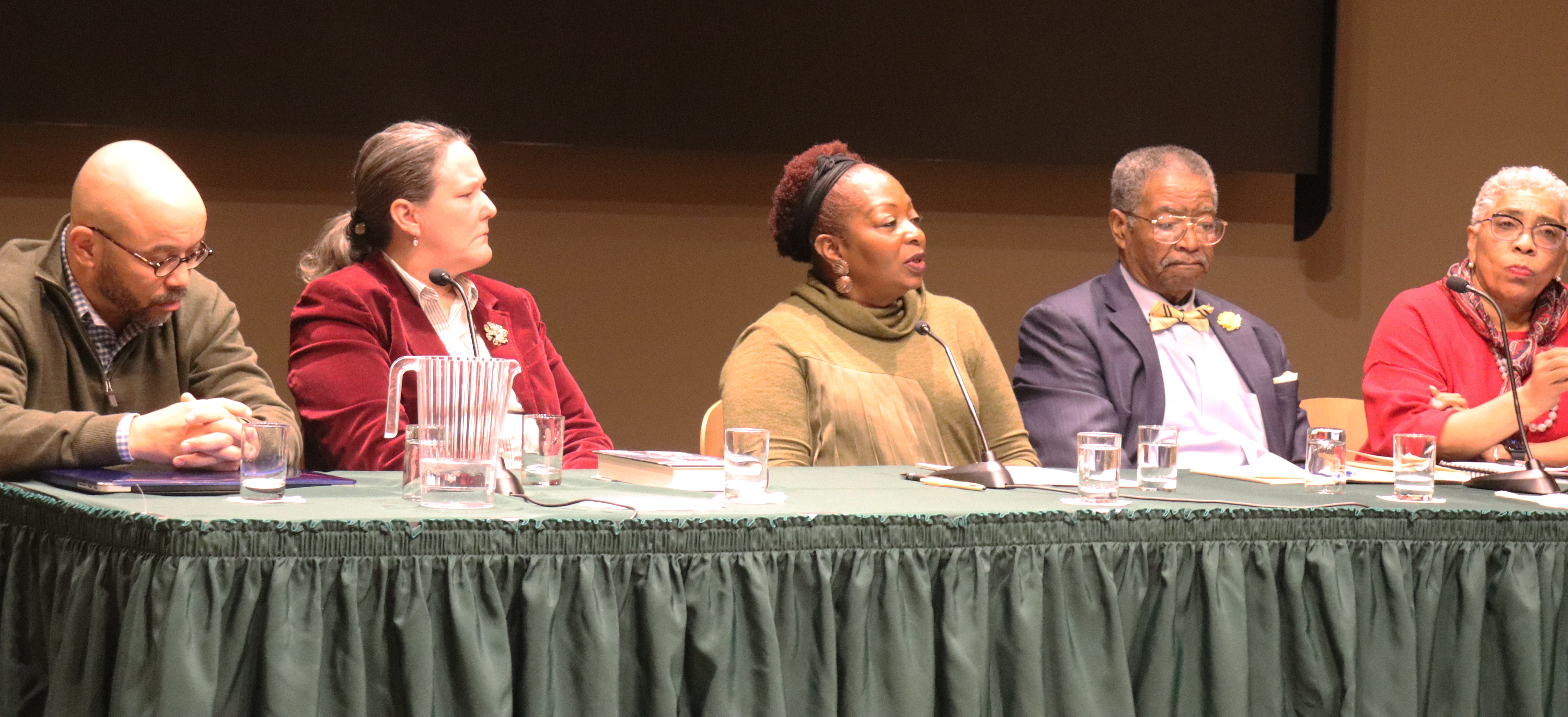
“I got my voice and I used that voice today to advocate for women, men, youth, and for all of us to get this story right in 2019”, shared Rev. Debra Hickman as she described how she found her voice by sticking up for her family as young girl on the tobacco fields in South Carolina and to the land lord that was stealing money from her unsuspecting parent when her family re-located in Baltimore. That same voice she found as a young girl is the same voice she uses now as she advocates for various communities throughout Baltimore and works to eliminate the disparities they face.
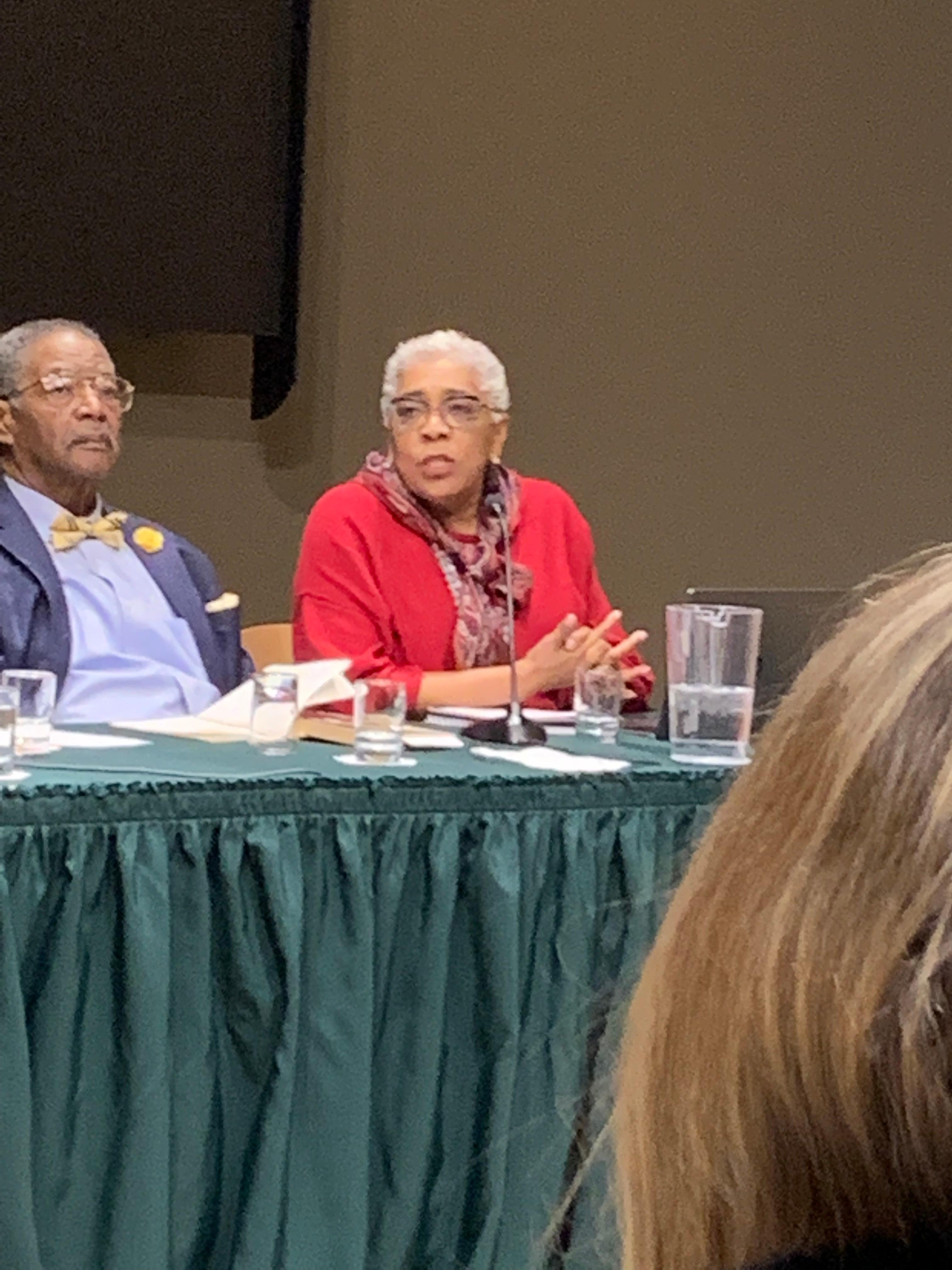
“We serve a God that made all of us. He did not make us with the disparities that we have and did not make one group of people to be Lord over another group, but [instead] for us to live in harmony.”, exclaimed Rev. Hickman.
Dr. Bowie wrapped up the evening by both praising and challenging public health professionals, specifically at the Bloomberg School of Public Health, to do more to combat these inequities.
“We are making progress here. We have incredible talent, an amazing group of people in leadership at our school. But my question is do we have the will? We have the resources […] but I believe if we are committed and believe in wanting a just and fair and healthy society then we will need to think about some of the ways in which we train more broadly.”
To listen to the entire dialogue that took place, watch the video at bit.ly/16192019.
